Clare Rosean
University of Chicago, Illinois, USA
To anyone who has ever been sick in bed with the flu, Viral Combat: Monica Fights the Flu will offer a quirky visual account of why it is so utterly miserable to be sick. Created with the intention of educating students between grades 7–10, the story personifies viral particles, the devious RNA strands they harbor, and their unsuspecting hapless victims—healthy human cells. It discusses the nature of the flu virus, how it infects and is transmitted, why its symptoms are so awful, and how to fight back. The book is a collaborative project between six medical students at the University of Chicago and myself and was funded by a grant from the University of Chicago’s Art and Science Initiative, a new program that aims to promote interdisciplinary work at the university. We chose the idea of a graphic novel/picture book because science can be difficult for kids to grasp sometimes, and it can also be boring. Through this engaging technique, we hope to communicate the importance of getting a flu shot, especially considering the fear some people have of the alleged side effects. As the illustrator, I chose to use a recurring orange, pink, and yellow color palette throughout the book. I associate this sort of nauseating sherbet coloring with being sick, reminiscent of vomit or Pepto-Bismol, which I think successfully communicates the truly dismal aspect of influenza.
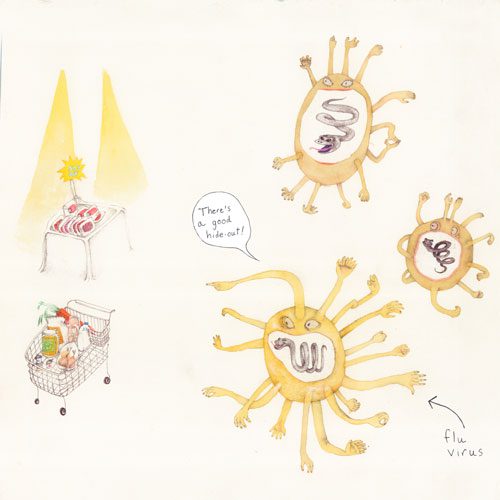 |
Each virus carries all the instructions to copy itself on its inside, coiled like a snake, locked away in its special coat. The human’s healthy cells can provide the tools the virus needs to carry out those instructions. The flu virus can rest on various things, waiting to be caught by a human. The floating flu |
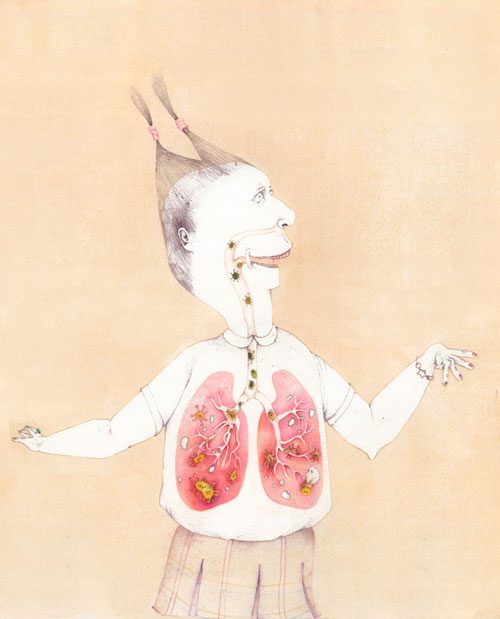 |
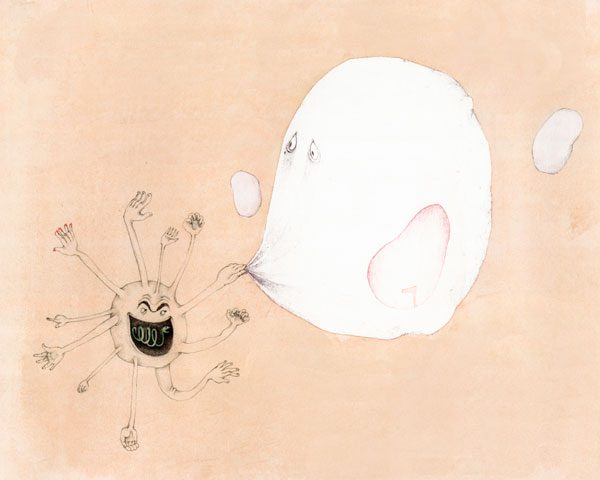 |
|
The flu virus then looks for an unsuspecting cell in the mouth, nose, or lungs to infect. The flu finds a home
|
The virus joyfully grabs a cell with its arm-like extensions. When the two meet, the virus sneaks its instructions into the cell. The flu grabs a healthy cell
|
|
After the virus inserts its instructions into a healthy cell, the virus’ instructions take over the control center of the factory. The instructions order the cell to make new viruses, which burst out of the cell and go on to hijack other healthy cells. Viral RNA hijack the nucleus |
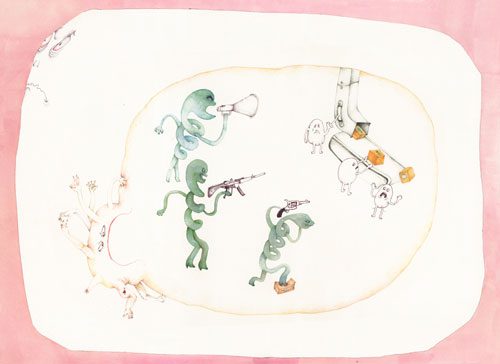 |
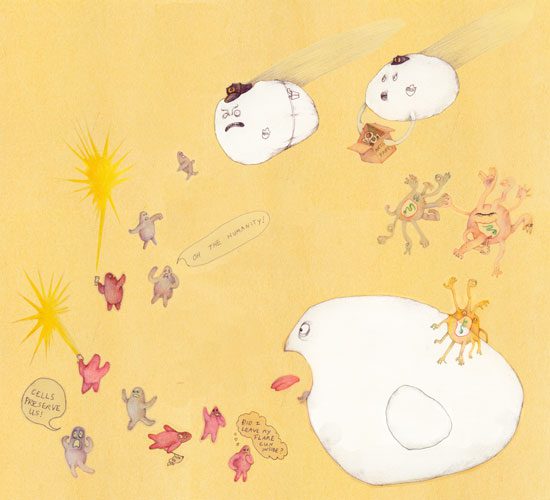 |
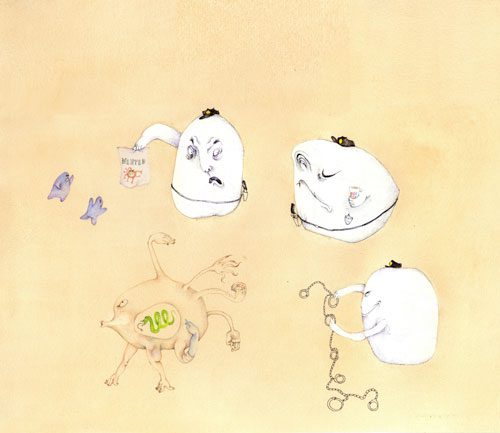 |
|
Even though the viruses have taken over the factory control centers inside the nucleus, the cells can still send out help signals that alert the body’s immune system, the body’s police force. It can hunt down viruses and destroy them before they have the chance to infect another cell. It does this by making antibodies. The antibodies are like handcuffs that only work against a certain type of virus. Immune police respond to invaders |
When the flu virus enters a body that has received a flu shot, the immune police recognize the virus right away and immediately begin producing antibodies against it. Immune response to vaccine
|
CLARE ROSEAN is an MFA student at the University of Chicago (class of 2012). In the future, she hopes to continue making fine art as well as book illustrations. Visit her website at www.clarerosean.com.
Highlighted in Frontispiece Winter 2012 – Volume 4, Issue 1
Winter 2012 | Sections | Gallery

Leave a Reply